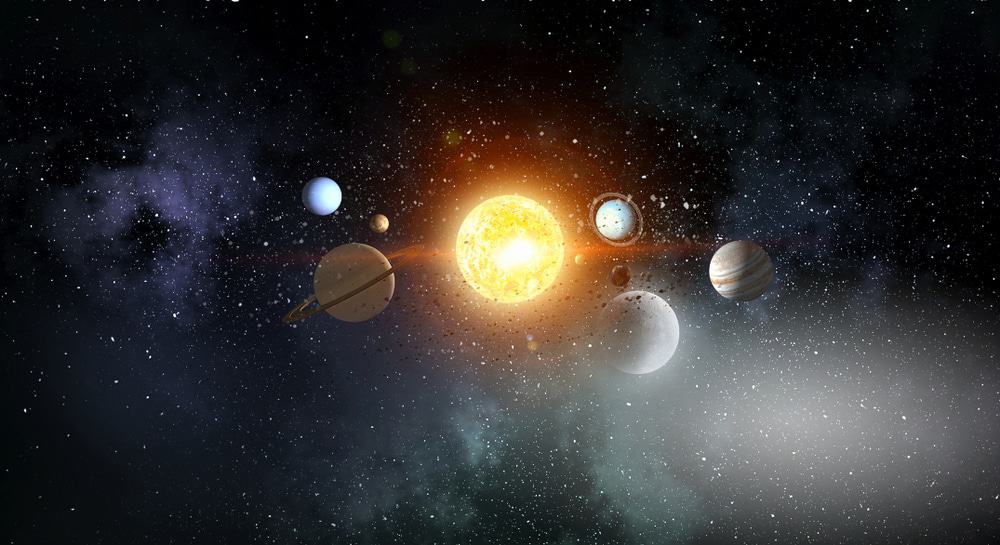How far is the Earth from the other planets of the Solar System?

The Solar System is an impressive landscape of celestial bodies, with planets varying in size, composition and, of course, distance from our home, Earth. Looking at the night sky and gazing at the stars is an activity that makes us wonder about the vast cosmic distances and how big our universe is. A doubt that surely occurred to you: what is the distance from the Earth to the other planets? Get ready for a cosmic journey through our space neighborhood.
The Celestial Dance: Movement of the Planets
Before we dive into the exact distances, it’s important to understand the motion of the planets in our Solar System. All planets, including the Earth, revolve around the Sun in elliptical orbits. These orbits aren’t perfect, but slightly elliptical, meaning they aren’t perfect circles, but tend to “take a path” that would look like the shape of an egg or something, meaning that the distance between a planet and the The Sun can vary over time depending on where it is located, and the same is true for the Earth and the other planets, since their orbits are different.
To measure distances in space, astronomers use a unit of measurement known as the “Astronomical Unit” (AU). One AU is the average distance between the Earth and the Sun, which is approximately 149.6 million kilometers. But of course, the other planets’ measurements to ours aren’t necessarily measured in such an astronomical unit.
The distance from the Earth to the other planets
As you can see, the distance from one planet to another will not always be the same, as their orbits also differ, some being shorter and some being extremely long, so it can be said that the distance a planet is today from our Earth, it won’t be like it will be tomorrow.
For this reason, we have adopted here an average distance from each of these planets to our dear Earth, since it is closest to its most distant point from our home.
Mercury: the burning neighbor
We begin our cosmic journey with the closest planet to the Sun, Mercury. The average distance between the Earth and Mercury varies from about 77.3 million kilometers when Mercury is at its closest position to the Earth, to about 222.5 million kilometers when it is at its most distant position.
Venus: the sister planet
The next destination on our journey is Venus, often called Earth’s “sister planet” due to their similarities in size and composition. The average distance between Earth and Venus varies from about 38 million kilometers to about 261 million kilometers, depending on the relative positions of the two planets in their orbits.
Mars: the red planet
Mars, often called the “red planet” due to the color of its surface, is next on our list. The average distance between Earth and Mars varies from about 54.6 million kilometers to about 401 million kilometers, depending on their orbital positions.
Jupiter: the gas giant
Now, get ready to meet the gas giant of the Solar System, Jupiter. The mean distance between Earth and Jupiter varies from about 628 million kilometers to about 928 million kilometers as both planets continue their orbits around the Sun.
Saturn: The Lord of the Rings
Another fascinating stop on our cosmic journey is Saturn, famous for its dazzling rings. The average distance between Earth and Saturn varies from about 1.2 billion kilometers to about 1.6 billion kilometers as both planets continue their cosmic dance.
Uranus: the tilted planet
Uranus, the first of the two “outer” planets of our Solar System, has a unique feature: it rotates on its side, as if it were rolling in space. The average distance between Earth and Uranus varies from about 2.6 billion kilometers to about 3.2 billion kilometers, depending on their orbits.
Neptune: the last giant
We have arrived at the last planet of our cosmic journey: Neptune, the blue planet. The mean distance between Earth and Neptune varies from about 4.3 billion kilometers to about 4.5 billion kilometers as both planets continue their orbits around the Sun.
Pluto: the ancient ninth planet
Although Pluto was once considered the ninth planet in the Solar System, its classification has been redefined and it is now considered a “dwarf planet”. The average distance between Earth and Pluto varies from about 4.4 billion kilometers to about 7.4 billion kilometers as both bodies continue to follow their eccentric orbits.

As we explore the distances between Earth and the other planets of the Solar System, we are reminded of the vastness of space and the wondrous cosmic dance that takes place every day. Each planet has its own personality, unique characteristics and mysteries to unravel.
Understanding the distances between planets is critical to space exploration, both in robotic missions and, who knows, future manned missions. As we continue to expand our knowledge of space, observing nearby planets helps us better understand our Earth and the precious nature of the Solar System.
The post How far is the Earth from the other planets of the Solar System? first appeared on Look Digital.
Source: Olhar Digital
Leave a Reply